Contemporary Furniture Finder
Tools
Role
UX Research, UX Design, UI Design
Dates
Team
06/2020 - 03/2021
Myself
Meridith Cohen (mentor)
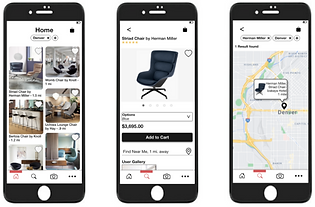
As a sales associate at a high-end furniture retailer, I would often get customers looking for an item that we did not have on display. This posed a problem as most people buying furniture wanted to see and feel the item in-person. Many employees did however have a few local spots that housed some of these pieces. This gave me the idea for Contemporary Furniture Finder. The solution was to create a database, social network, and ecommerce site that housed physical locations of iconic pieces of furniture in public spaces like restaurants, and art galleries. The user could then search, locate, and purchase the item all from the app or browser.
Problem: Consumers shopping for furniture prefer to see the item in person, but when the item is not in the retail store the customer feels frustrated and defeated.
Solution: A product that is familiar to the user, enabling them to browse or search for items, can locate pieces in the area, see the item in person, and purchase through the app.
Outcome: An easy to use product with straightforward navigation for easy task completion.
Discovery
Find a problem or opportunity...
I started my research by getting to know my users and asking questions like:
-
What do my users look for when shopping for furniture?
-
How do my users prefer to purchase furniture?
-
What is important to my users?

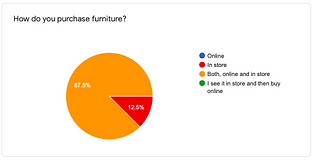
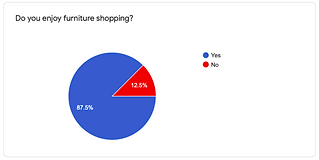
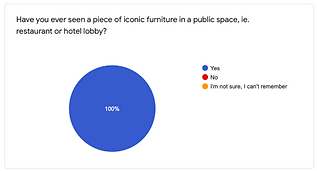
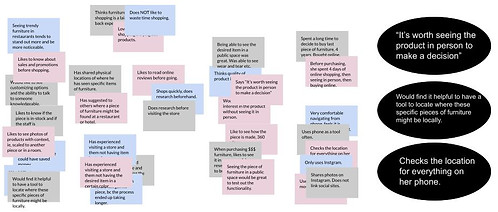
Key Findings from User Research
My users ...
-
...wanted to be able to see the piece of furniture in-person before purchasing.
-
...were interested in knowing when items were on sale.
-
...expressed they have seen modern, iconic furniture in art museums and restaurants, which validated my solution, locating items in public places.
Define
To understand my user's journey...
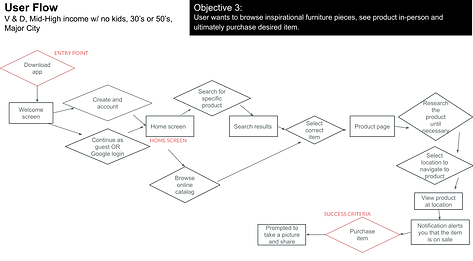

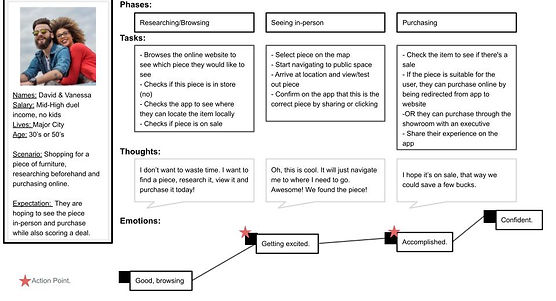
User Persona
Vanessa
Goals: To get as much information about the piece of furniture before purchasing.
Behaviors: Diligent with furniture research and efficient with their time spent actively pursuing a purchase.
Habits: Constantly on their phone checking out new attractions, checking reviews, and shopping.
Likes: Quality of product.
Dislikes: Wasting too much time shopping.
Ideate & Design
Pencil & paper, tablet, and prototype...

Information Architecture
Wireframe Sketches


High Fidelity


Experience delight! After the user submits a photo, they're congratulated and given a fun fact about the company.
Test
To collect feedback...


Key Findings from Usability Testing
-
My biggest issue was that my users couldn't find the sale products.
-
As a key finding during user research, this was a high priority fix.
-
-
Majority of users preferred the organic grid layout, showcasing lifestyle photography over the straight grid with product photography.
-
This was found through the A/B testing method.
-
-
My UI design, focusing on the iconography, needed to be standardized.
Old navigation with confusing, inconsistent icons

New, clean navigation. Ellipse menu housing sale section.
Preferred organic grid layout
Outcome
Effectiveness: I believe this product has more potential. I expect this application to have a strong user engagement that will turn into profit for the e-commerce sales and the local economy as users will be visiting physical locations nearby.
Retrospective:
-
I absolutely enjoyed speaking to my users. Every bit of information I gathered from them was crucial in forming my user personas, which are vital for understanding who you are designing for and what you are designing for them.
-
If I had more time I would've liked to have developed the prototype a bit more so my users could get a better feel for the product during usability testing.